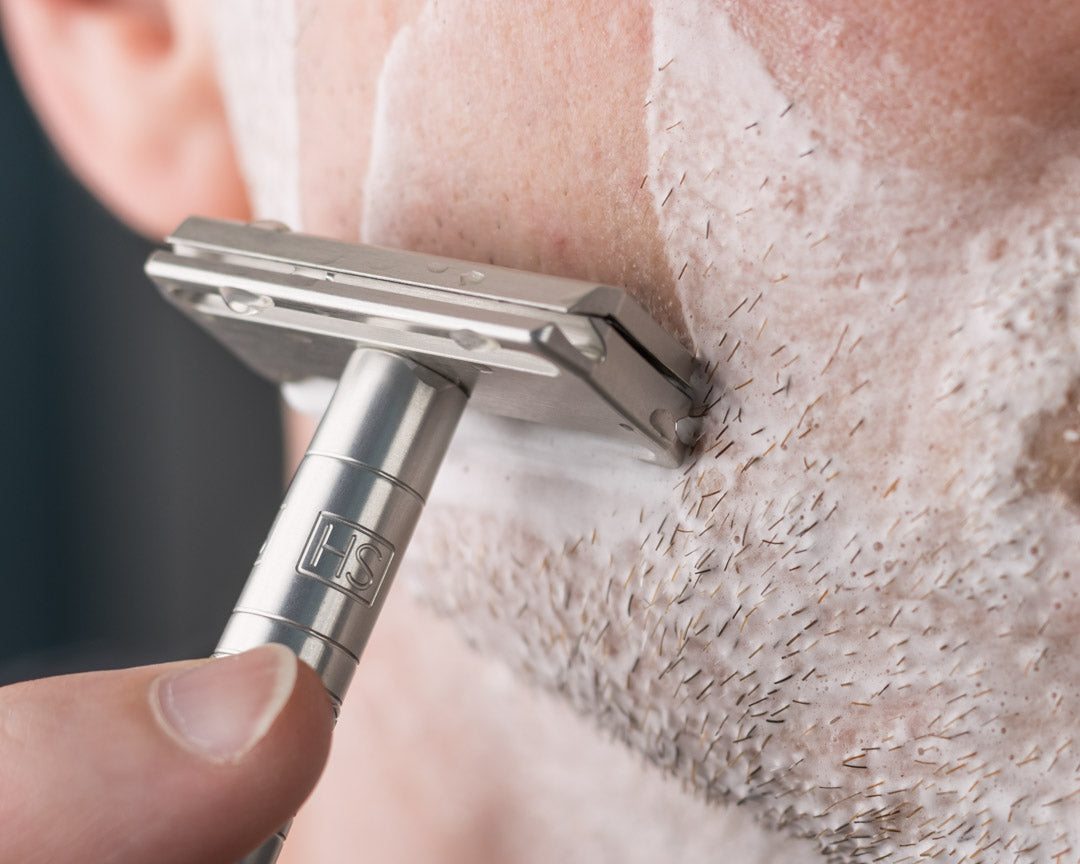Shaving should be an effortless task, not a chore that you have to deal with or actively avoid. Unfortunately for many people, though, shaving often leads to itchy, irritated skin from two culprits — razor burn and razor bumps.
People often use the terms interchangeably, but there are differences. Razor burn is that telltale red rash after shaving. Beyond a red rash, the typical signs of razor burn are tenderness, a hot sensation or itchiness, and small red bumps. Razor bumps are different because instead of being caused by shaving, razor bumps form when shaved hair grows back as ingrown hair, causing acne-like blemishes and spots.
Let’s talk about what causes razor burn and how to prevent it, so every shave is a great shave.
Facial hair needs the right tools
Great shaves aren’t about removing all the hair. We always say that a great shave means you’re able to remove as much of the hair as possible—without cutting or irritating your skin. Achieving this can be difficult because facial hair isn’t like the hair on your head. The average person’s facial hair has the same tensile strength as a piece of similar diameter copper wire.
You wouldn’t use dull clippers or blades to cut wire and you shouldn’t use them on your facial hair either.
What causes razor burn?
Getting that perfect irritation-free shave can feel like you’re setting up for a ritual. You have to get the water to the right temperature for your skin. You need to prep your skin with the right shaving soap or lotion. Then you think to yourself—when was the last time you changed your blade?
Razor burn can happen with both wet shaving and dry shaving. Dry shaving uses an electric razor, and wet shaving is done with a safety or cartridge razor using soap or lotion.
Dry shaving
Using an electric razor has its advantages. The process can be faster since you don’t need to use shaving soap or water to lubricate your skin before shaving. Electric razors cut the hair above the skin but can still irritate, leading to razor burn. Not using shaving soap or other lubrication can cause razor burn if you repeatedly go over the same area.
Incorrect shaving technique
Razor burn can still occur with wet shaving using a safety or cartridge razor blade when you press too hard when shaving. The blade should glide against your skin, not press down on it. It’s also good to remember that a great shave does not remove all the hair. It’s one that removes the most hair possible without irritating the skin. As the saying goes, “perfect is the enemy of good.”
Old blades
Last but certainly not least — changing your blades is one of the most important things you can do to prevent razor burn. Dull blades can cause you to go over the same spots multiple times, which causes irritation.

How to prevent razor burn
We all want that television commercial moment where we wipe the steam off the mirror to see our faces perfectly shaved. We also all want perfectly styled hair and six-pack abs, but unlike those, a decent shave with fewer occurrences of razor burn is possible.
Change your blades
How often you change your razor blades depends on several factors, from skin type to hair thickness. Most people should change their blade every five to ten shaves. Changing your blades is also a great time to give your safety razor an extra deep clean to remove any build-up.
Watch your strokes
Whether you’re dry or wet shaving, going over the same spot on your skin multiple times can irritate your skin, leading to razor burn. There’s no correct answer regarding whether going against the grain is right or wrong. When a blade hits a hair when shaving against the grain, it pushes it back before cutting it, but that doesn’t necessarily mean it will cause razor burn. It all comes down to how your skin reacts to the blade. It’s also important to use a handle that holds the blade securely in place as you shave. Blade chatter—the unwanted movement of the blade in a handle—can cause knicks and other irritation as you save.
Skincare
Taking care of your skin before, during, and after shaving is critical to reducing razor burn. When wet shaving with a safety razor, rinse your face with warm water and use a shave lotion or soap that’s right for your skin type.
